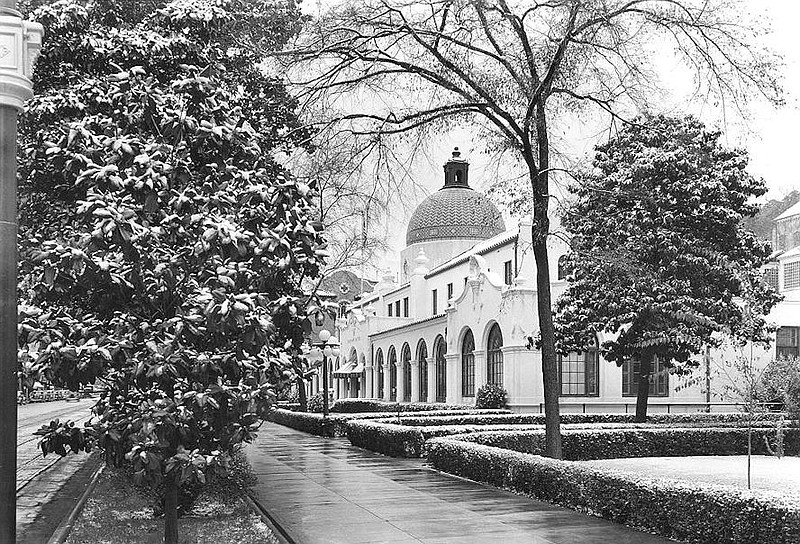Although snowfall in Hot Springs National Park is rare, it does happen some years. Being normally so warm, the park is usually listed in the top 10 places in the national park system to visit in the wintertime.
Looking at these images from the park archives, one can see that there have been a few years when significant snowfall took place. When it happens, park maintenance personnel work quickly to remove the snow and ice from all major walkways so visitors will be safe. Of course, through it all, the thermal springs continue to pour forth their soothing, steamy waters as they have for countless millennia.
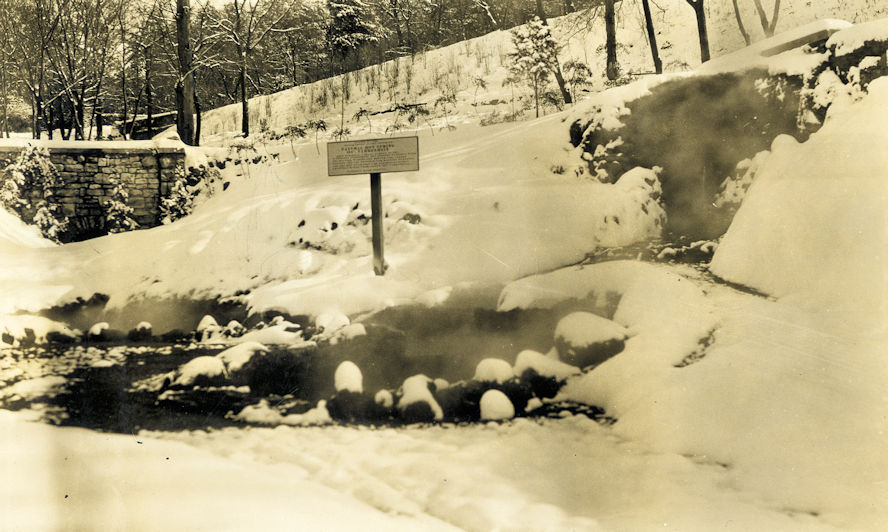 Vapor rises from the open display spring behind the Maurice Bathhouse, Dec. 12, 1932, as Hot Springs National Park is transformed into a winter wonderland. - Submitted photo
Vapor rises from the open display spring behind the Maurice Bathhouse, Dec. 12, 1932, as Hot Springs National Park is transformed into a winter wonderland. - Submitted photo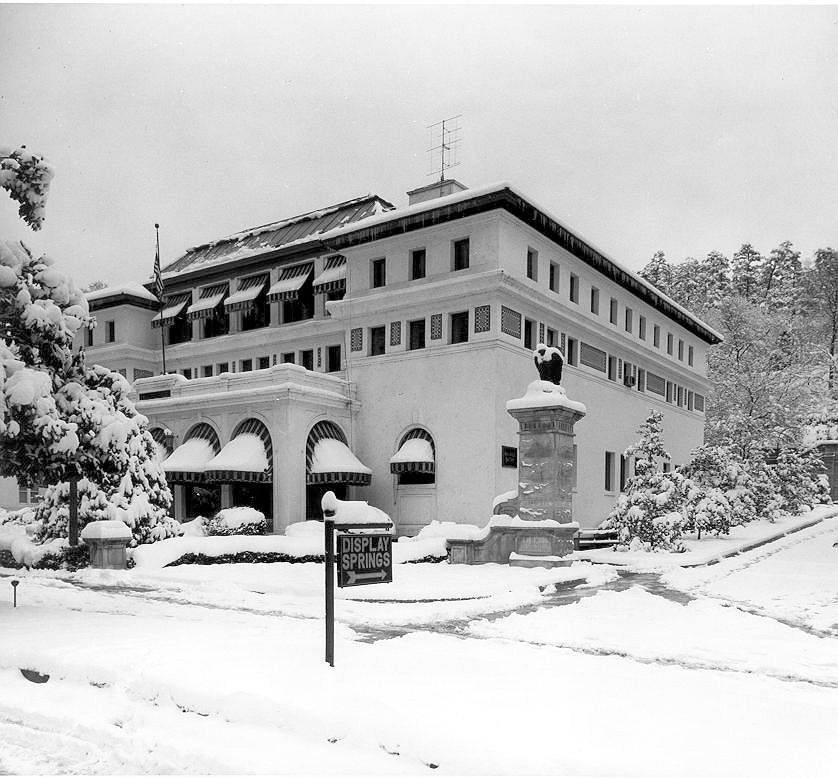 At the formal entrance to the park, one of the bronze eagles (created in 1894 by sculptor Edward Kemeys) seems to shiver in the cold beside the Maurice Bath House. This building opened in 1912 with a floor space of 23,000 square feet. It was the only bath house on the row to have a pool. The only one of the eight bath houses not currently occupied, it is available for commercial leasing. - Submitted photo
At the formal entrance to the park, one of the bronze eagles (created in 1894 by sculptor Edward Kemeys) seems to shiver in the cold beside the Maurice Bath House. This building opened in 1912 with a floor space of 23,000 square feet. It was the only bath house on the row to have a pool. The only one of the eight bath houses not currently occupied, it is available for commercial leasing. - Submitted photo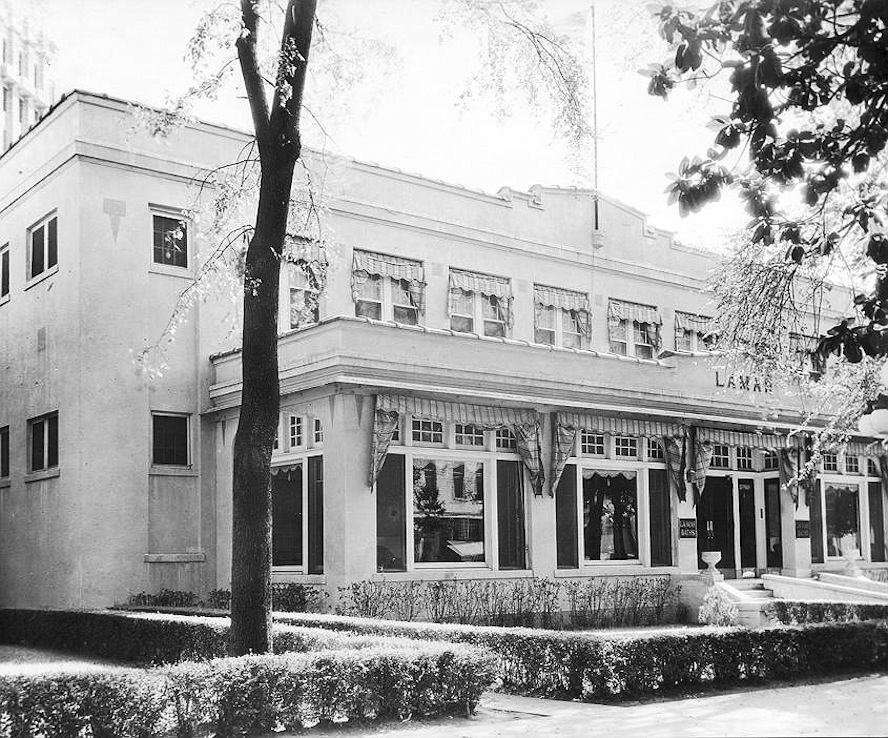 Ice coats the branches of trees, including one of the magnolias that Bathhouse Row is famous for, in front of the Lamar Bath House. This Lamar opened in 1923 and was named for Lucius Quintus Cincinnatus Lamar, who had been Secretary of the Interior when the first Lamar was built in 1888. - Submitted photo
Ice coats the branches of trees, including one of the magnolias that Bathhouse Row is famous for, in front of the Lamar Bath House. This Lamar opened in 1923 and was named for Lucius Quintus Cincinnatus Lamar, who had been Secretary of the Interior when the first Lamar was built in 1888. - Submitted photo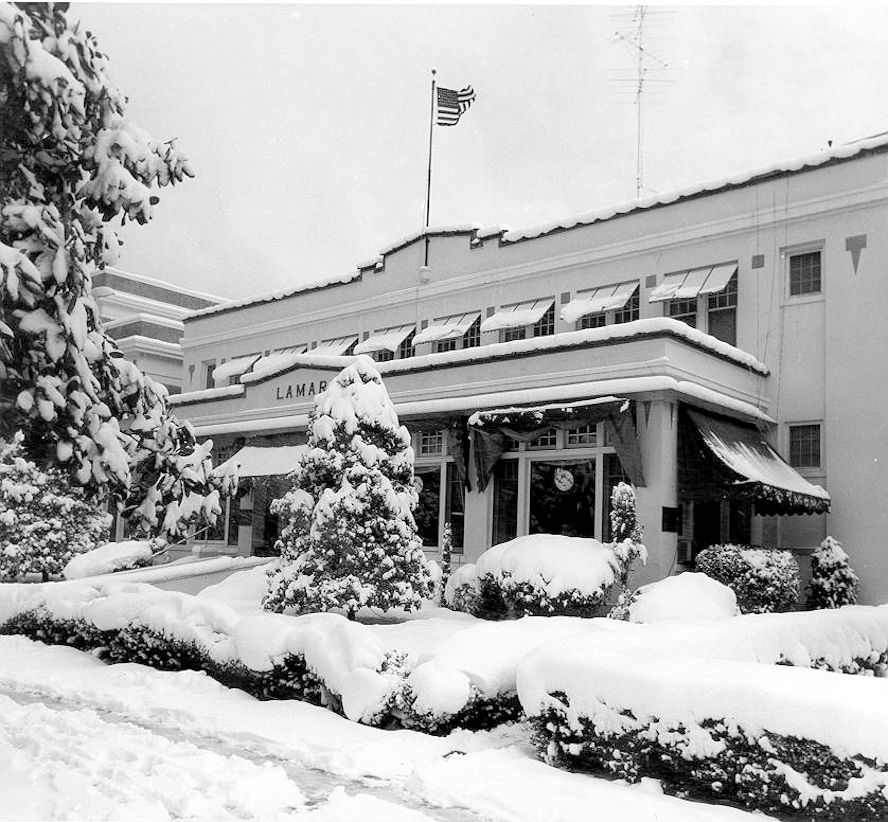 Snow blankets the approach to the Lamar Bath House. The Lamar’s construction cost was $130,000. The lobby, the longest on Bathhouse Row, features a long counter of Tennessee marble. Today, the Lamar houses the Bathhouse Row Emporium (the park’s store) as well as offices for the park's Resources Management employees, the park archives, museum collection storage spaces, and a research library. - Submitted photo
Snow blankets the approach to the Lamar Bath House. The Lamar’s construction cost was $130,000. The lobby, the longest on Bathhouse Row, features a long counter of Tennessee marble. Today, the Lamar houses the Bathhouse Row Emporium (the park’s store) as well as offices for the park's Resources Management employees, the park archives, museum collection storage spaces, and a research library. - Submitted photo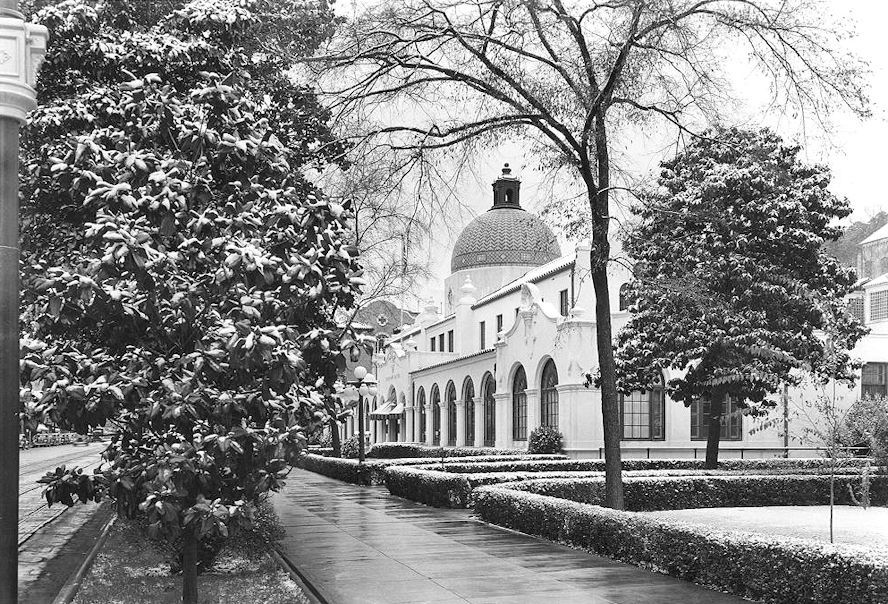 An icy sidewalk seems to have kept visitors away from the Quapaw Bath House. Opened in 1922 on the site of the old Horseshoe and Magnolia bath houses, it’s the longest bath house on Bathhouse Row. Today it houses the Quapaw Baths & Spa, and is one of two places on the row where visitors can immerse themselves in the thermal waters. - Submitted photo
An icy sidewalk seems to have kept visitors away from the Quapaw Bath House. Opened in 1922 on the site of the old Horseshoe and Magnolia bath houses, it’s the longest bath house on Bathhouse Row. Today it houses the Quapaw Baths & Spa, and is one of two places on the row where visitors can immerse themselves in the thermal waters. - Submitted photo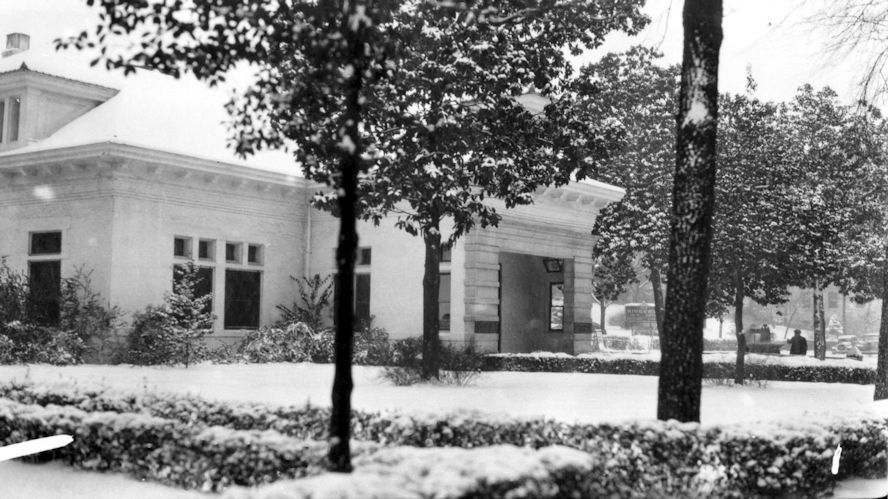 A visitor braves the cold to visit the jug fountain near the park’s administration building on the corner of Reserve Street and Central Avenue. Converted from a pump house, this building was replaced in 1936 with the current administration building. - Submitted photo
A visitor braves the cold to visit the jug fountain near the park’s administration building on the corner of Reserve Street and Central Avenue. Converted from a pump house, this building was replaced in 1936 with the current administration building. - Submitted photo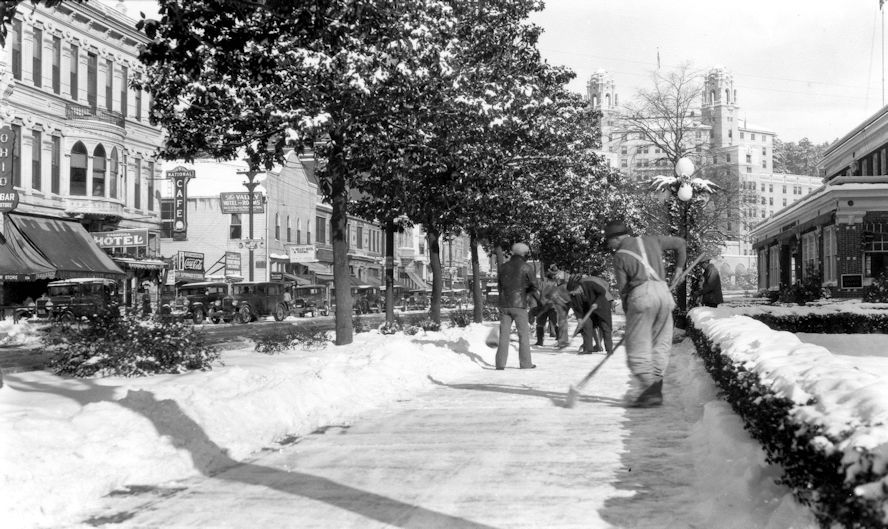 In the late 1920s, park employees clear the sidewalk near the Superior Bath House. (The smallest bath house, the Superior opened in 1916 and now is the home of the Superior Bathhouse Brewery.) Heavy traffic moves down Central Avenue despite the recent storm while the 1924 Arlington Hotel rises at the north end of Bathhouse Row. Submitted photo
In the late 1920s, park employees clear the sidewalk near the Superior Bath House. (The smallest bath house, the Superior opened in 1916 and now is the home of the Superior Bathhouse Brewery.) Heavy traffic moves down Central Avenue despite the recent storm while the 1924 Arlington Hotel rises at the north end of Bathhouse Row. Submitted photo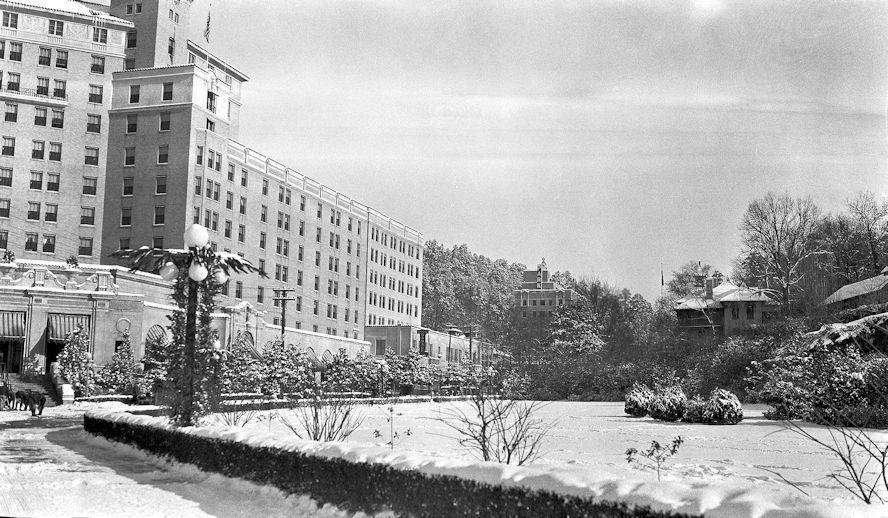 Shown in the late 1920s, the third Arlington Hotel towers over the park’s Arlington Lawn. The second Arlington was located on the site of the lawn. After that hotel burned in 1923, the current Arlington was rebuilt across Fountain Street, and the lawn was landscaped. In the distance on the north side of Fountain Street is the newly opened Park Hotel. In the distance on the south side of Fountain Street is the park’s Superintendent’s Residence, which was built in 1891 and torn down in 1958-59. - Submitted photo
Shown in the late 1920s, the third Arlington Hotel towers over the park’s Arlington Lawn. The second Arlington was located on the site of the lawn. After that hotel burned in 1923, the current Arlington was rebuilt across Fountain Street, and the lawn was landscaped. In the distance on the north side of Fountain Street is the newly opened Park Hotel. In the distance on the south side of Fountain Street is the park’s Superintendent’s Residence, which was built in 1891 and torn down in 1958-59. - Submitted photoFor more information, the Garland County Historical Society may be contacted by email at [email protected], phone at 501-321-2159, or at garlandcountyhistoricalsociety.com.
